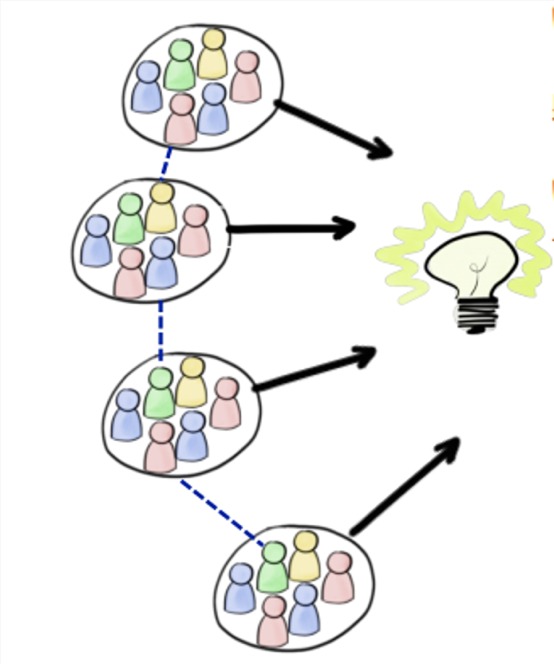In the past, organizations mastered the industrial-era technical and management practices that maximized efficiency and stability. They used these practices to create robust hierarchies that supported ever-increasing economies of scale. While many organizations used these models to start large transformation programs and bring about change within their organizations, there are organizations like Amazon that focuses on the power of small teams - teams no larger than the number of people it takes to feed with two large pizzas (six to eight people).

Organizations have realized that whether they are starting a new endeavour, kicking off a new initiative or launching a new product, starting small as a practice helps them overcome uncertainty and mitigate risks along the journey. Though there is no single blueprint for success, the starting small approach ensures that they have a good chance of hitting the target in their own unique way. And succeed in the age of disruption.
Starting small allows the organization and the team(s) to stay close to the changing context, while driving change. The organization is building the business of the future while delivering continuous value to the existing customers and stakeholders.
By starting small, they are not betting the entire company, rather they are trying to learn fast what works in their context.
Some of the key elements of starting a small team include -
- Multi functional team - Getting the right people with a combination of skills to deliver the right output leading to the right outcomes
- Focus on the Job to be done - Identifying the right project or problem to be solved with clearly defined objectives and measures to monitor progress and delivery of value
- Team empowerment - Empowering the team to make the decisions and allowing them the freedom to operate within the defined guard rails or domain of authority. Ex: Giving a squad the responsibility for the complete customer journey to address existing issues and create exceptional customer experience
- Space to experiment - Creating a steady stream of new value requires experimenting with new ideas and exploring new paradigms
Key factors to ensuring successful outcomes for a new multidisciplinary team -
- Bringing together business, technology and creative teams to deliver the outcomes. The team should consist of people with creative skills (like designers or content designers), business people who have high technology literacy and people who are skilled with technology.
- The new team should a good degree of separation from the existing organization. This means creating new roles for the team members - roles like product managers, delivery managers, devops engineers, user researchers to cover the wider needs of both users and the business.
- Defining a new Operating model, processes and lean ways of working for the newly formed team
- Identify the customer Value stream - from concept to cash
- Visualize the flow of work for the team
- Build and measure in small, frequent learning cycles
- Aim to constantly improve the flow of work
- Optimize for Value delivery
- Creating a separate work space for the team. This ensures that there is a dual operating system within the organization. The new multidisciplinary teams work on building new Value streams alongside existing teams that deliver business-as-usual.
- Identifying initiatives that can 'start small' but rapidly scale sideways while socializing the new ways of working
- Leadership should be strong proponents of the change. Support and sponsorship for what the teams are working on should come from the highest level within the business.
How do we scale the model across the organization -
- Scale sideways inviting other teams from different Value streams to join the journey, starting small. Ensure there is enough social proof of the success and the change.
- The innovators will go first, creating an acceptance of the change within the teams and making it acceptable for the Early Adopters and Early Majority to participate. The friction goes down as the adoption rate of the new ways of working increases and as the knowledge diffuses through the organization.
- Ensure that the learning goes back to the wider organization. While other teams within the Value stream join the journey and see improvements to the Outcomes, the rate of change increases over time with more teams experimenting within the new ways of working.
| Team characteristic | Description |
|---|---|
| Responsive |
|
| Improvement Culture |
|
| Customer Led, not Technology Led |
|
| Innovative and Experimental | |
| Secure, Resilient and Scalable Architecture |
|
Finally, once these teams are established within the organization, we can see some of the below characteristics that define these teams and the wider organization.